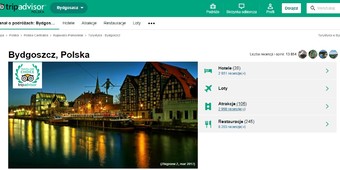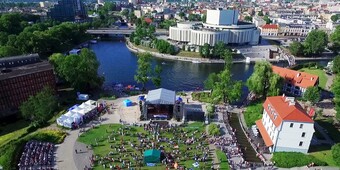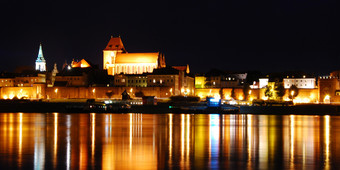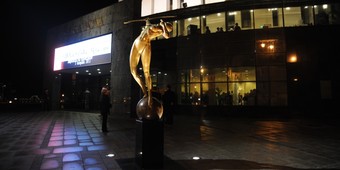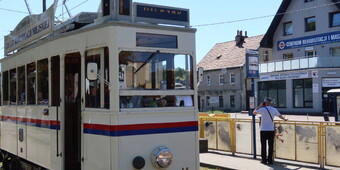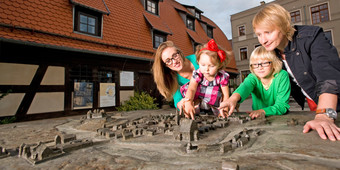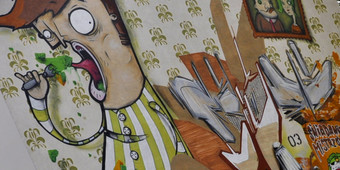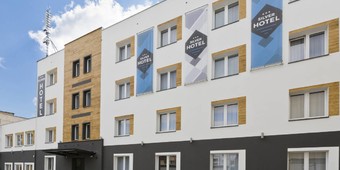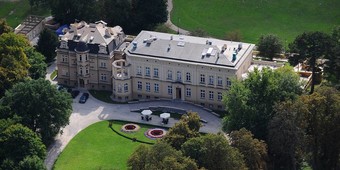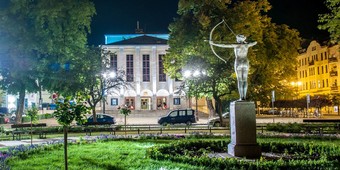Botanical Garden in Myślęcinek
Description
The Forest Park for Culture and Leisure is an urban park covering an area of 60 hectares. Entry to the garden is free of charge, and the premises are open all year round from 9:00 am until dusk. Currently, there are 820 species of plants (including 460 wildlife plants) to be found in the garden. The spatial development plan for the Botanical Garden, laying down its general outline and program, was designed in 1977 by professor Edward Bartman; construction works began in 1980.The garden was designed according to the so-called "habitat concept", laying particular stress on the preservation, shaping and exposure of communities and species of regional plants.
Next to regional plants, the garden also features foreign and exotic plant formations as well as numerous thematic collections and exhibitions.
The main attractions of the Botanical Garden comprise:
1. Polish plant communities
2. Arboretum
3. Conifer garden
4. Rock garden
5. General collections
6. Thematic exhibitions
7. Agro-botanical garden
8. Botanical route for the sight-disabled
1. Polish plant communities comprise the largest and the most significant section of our Garden. It covers an area of 20 hectares and features various plan species presented in communities and formations in which they occur in the wilderness. Some of the most interesting communities collected in the garden include forest communities (beechwood, riparian forests, maplewoods), water and floodplain plants, meadows and swards.
2. The arboretum project designed by professor Stanisław Balcerkiewicz and Maciej Korczyński, Ph.D, in 2001, provides for the presentation of the dendroflora of selected formations from around the world. The arboretum includes tree species from North American forests, temperate rainforests, cycad forests, tundra plants, desert trees and shrubbery, as well as sclerophyll woods. Our arboretum is complemented by numerous thematic collections and exhibitions including species such as beeks, maples, roses, as well as the heather family, protected species, evergreens and the spring garden.
3. The conifer garden was the first collection to appear in our Botanical Garden. According to the design of landscape architect Adam Pietrzak, the entire composition is set in a manner resembling an amphitheater, with strips of different species arranged from the lowest to the highest shrubbery upwards, with the tallest tree formations at the top of the landscape. In this part of the garden, you will see various species of the fir, spruce, juniper, "false cypress", Douglas-fir, microbiota and ginkgo. The conifer garden also includes a collection of Thuja trees.
4. The rock garden is definitely the most spectacular part of the Garden. The relative altitude of the area can reach as high as 20 meters, whereas the fascinating landscaping allows for the development of the typical mountain formations, such as flanks, arêtes, couloirs, and gullies. In the very center of the garden you will find a small mountain lake featuring a creek and a waterfall. Various types of rocks are home to various types of plantlife; the granite part comprises mainly mountain pine and Swiss pine; whereas limestone is home to mountain flowers, white dryad, alpine pink and many other species.
5. General collections include a host of species and varieties of trees and shrubbery. In the Botanical Garden you will find, among others, collections of pines and rhododendrons, lilacs, rosebud cherries and apple trees, magnolias, Spiraea and Cornus.
6. Thematic exhibitions in the Botanical Garden present various fields of interest; many of them have been designed with a view to serving educational purposes. Some of the most fascinating exhibitions include the Butterfly Garden, the Biblical Plants, the Altitudinal Zonation of Mountain Trees, the Hybrid collection - parents and children, and the Plant Sex.
7. A closed section of the Botanical Garden includes a small area filled with domesticated plants. It includes contemporary and formerly popular varieties of fruit trees - for example, the collection of old varieties of apple trees has been replanted from the village of Chrystkowo, with support from the Landscape Park of the Lower Vistula Valley. The agricultural route guides the garden's visitors along cereals (including buckwheat, panicum, and emmer wheat), industrial plants, root vegetables and the bean family. The collection of medicinal plants, whose development is supported by the Medical Academy, is currently under construction.
8. The botanical route presents the world of plantlife arranged systematically for the sight-impaired. A 300-meters long railing runs along approximately 230 taxa of plants, planted either in the ground or in special pots. Every plant features an information board in Braille format.








